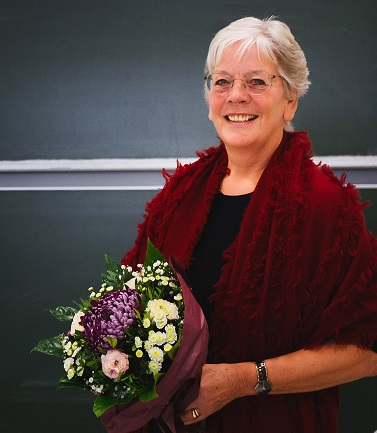
The bi-annual ICOS Ingeborg Levin Early Career Scientist Award recognises exceptional researchers who have made significant contributions to the field of greenhouse gas research. Inspired by Ingeborg Levin's pioneering work, this award celebrates scientists whose research, grounded in observational data, addresses fundamental questions within greenhouse gas cycles, using conceptual models and essential ideas.
This award is intended to honour and support the work of early career scientists who are following in Ingeborg Levin's footsteps and using observational data to foster a deeper understanding of biogeochemical processes.
Criteria:
- Early-career Status: Candidates must be within 7 years of receiving their PhD.
- Research Excellence: Demonstrated significant contributions to greenhouse gas or related isotope research.
- Observational Focus: Research should be primarily based on observational data or their use in conceptual models.
How to nominate:
Candidates are nominated by their peers or mentors. Nomination for the first award opens 15th April 2025 and closes 30th May 2025 at 16:00 Eastern European Time. Nominations should be sent by email to: ingeborg-levin.award@icos-ri.eu
Submission contains:
- the nominee's CV
- a summary of their research contributions (maximum 2 pages)
- a list of related scientific publications
Review process:
The suggestions will be evaluated by up to 3 experts from the ICOS Research Infrastructure Committee (RICOM) plus an external expert. The nomination committee propose the candidate to the RICOM, which approves. RICOM members are not allowed to nominate candidates.
Award:
The first ICOS Ingeborg Levin Early Career Scientist Award will be conferred during the ICOS ERIC 10-year anniversary in November 2025. The award includes prize money of €5000, free participation and a keynote lecture at the following ICOS Science Conference 2026.
Ingeborg Levin (1953—2024)
Dr. Ingeborg Levin has pioneered using isotopic information to constrain atmospheric greenhouse gas budgets, especially radiocarbon in atmospheric CO2. Once she recognised the potential of 14CO2 for partitioning carbon exchange fluxes between the atmosphere, biosphere, and ocean, she tirelessly worked toward establishing a global network to measure atmospheric radiocarbon. Her scientific curiosity was never limited to atmospheric CO₂ alone—she was always open to exploring other carbon cycle compartments and greenhouse gases, fostering a broader understanding of biogeochemical processes. She played a key role in the implementation of the ICOS Central Radiocarbon Laboratory, which she and her team built with remarkable dedication and enthusiasm. As a teacher and supervisor, she was both excellent and demanding, always bringing out the best in her students. And she was able, even happy and proud, to allow them to grow as postdocs. She took pride in seeing them grow into independent scientists, supporting them as postdocs and beyond, leaving a lasting impact on the next generation of researchers.